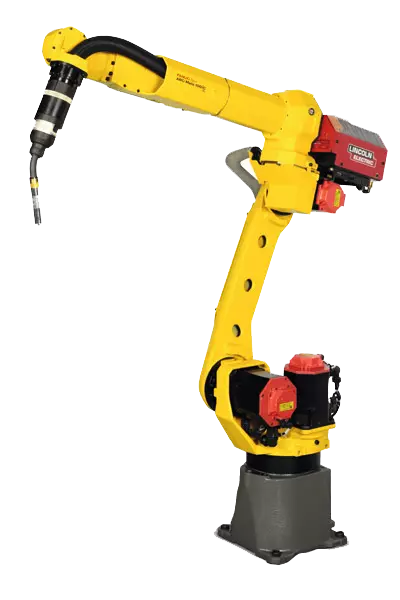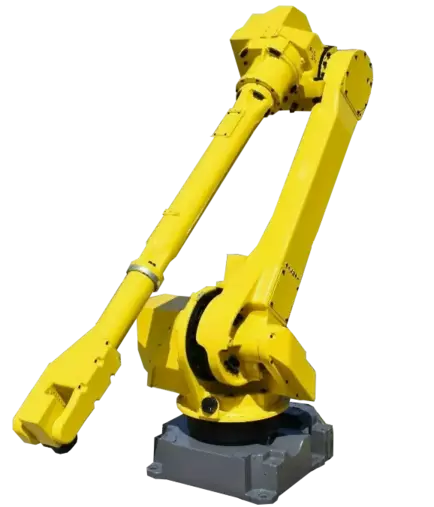What are the Components of a FANUC Welding System?
Welding is one of the most common applications automated by FANUC robots. FANUC welding robots can be deployed for both arc welding and spot welding processes. There are several components that make up a FANUC welding system. Exact components will depend upon specific applications requirements, but in general the components of a FANUC welding system can consist of:
- • Welding Robot - FANUC welding systems can consist of one or multiple industrial robots. FANUC’s Arc Mate series features several robots specifically designed for arc welding automation. The FANUC Arcmate 100ic and Arcmate 120ic are two popular robots from the series. FANUC’s multipurpose M series also features robots capable of arc welding automation including the FANUC M-710ic/20L. FANUC arc welding robots feature slimmer profiles and through-arm cabling for a more reliable operation. FANUC’s heavier payload robots can be used to automate spot welding. The FANUC R-2000ic/165F is ideal for spot welding automation.
- • Torch - The next component of a FANUC welding system is the EOAT which for welding consists of a torch. Robotic welding torches are integrated with the wrist of a FANUC robot. For arc welding applications there are two types of torches that can be used, either air-cooled or water-cooled. FANUC robots being used to automate spot welding applications will be integrated with a spot welding gun.
- • Power Supply - For arc welding applications a FANUC six axis robot will need to be integrated with a power supply. FANUC robots are compatible with power supplies from Lincoln Electric and Fronius. The Lincoln Powerwave R350 integrates nicely with the FANUC 100ic. While the Fronius CMT 4000 can be integrated with the FANUC 120ic. Power supplies are responsible for providing the electric current and shielding gas needed for arc welding.
- • Wire Feeder - Another component that is exclusive to arc welding applications is the wire feeder. A robotic wire feeder is used for arc welding applications that require a filler wire. Wire feeders are mounted on the back of a FANUC robotic arm and continuously feed filler wire to the torch. Most FANUC arc welding robots feature a shelf behind the robotic arm for seamless wire feeder integration.
- • Reamer - Reamers can be integrated with FANUC welding systems to help maintain the arc welding torch to ensure optimal welding. Robotic reamers automatically clean torches to prevent the buildup of spatter inside of the torch.
- • Positioner - Positioners are needed to control the rotation of workpieces during welding. Robotic positioners provide FANUC articulated robots with better access to weld locations on parts. There are several types of positioners available and the exact type needed will depend upon the size, geometry, and weight of your workpieces.
- • Weld Cell - The best way to optimize and configure your FANUC welding system is with a weld cell. Robotic weld cells can be customized or purchased as a turnkey system. Turnkey weld cells with FANUC robots are manufactured by Genesis and Lincoln Electric. Pre-engineered cells come with a FANUC welding robot or robots and all other components needed for welding, completely integrated for minimal setup.
Robots Done Right can help get you started with automating your welding application as we sell a variety of used FANUC welding robots. RDR also carries used FANUC welding packages that are tested and in good working condition.
Contact Matt at mm@robotsdoneright.com or 440-724-6568 in order to discuss purchasing or selling a used FANUC robot today.


